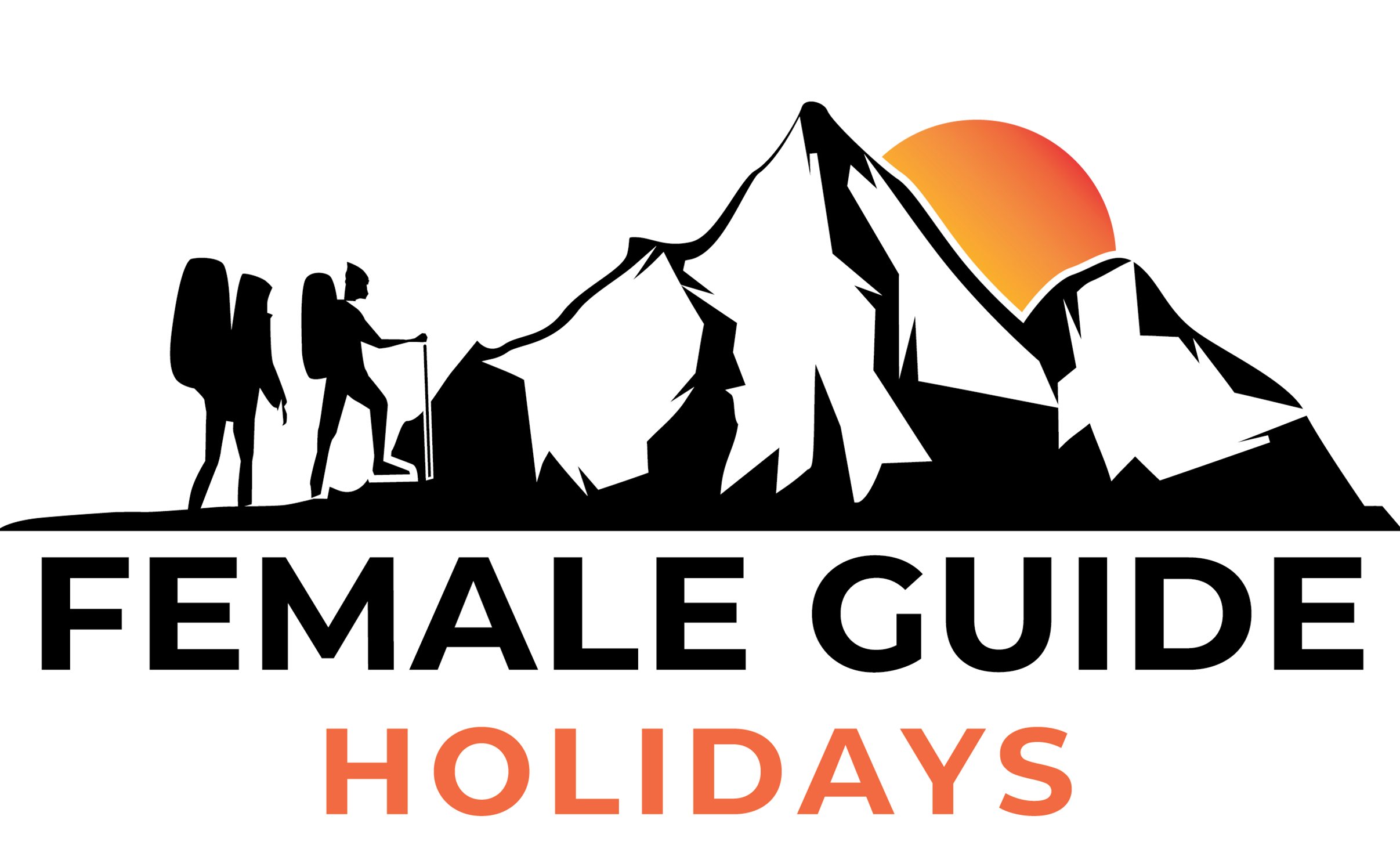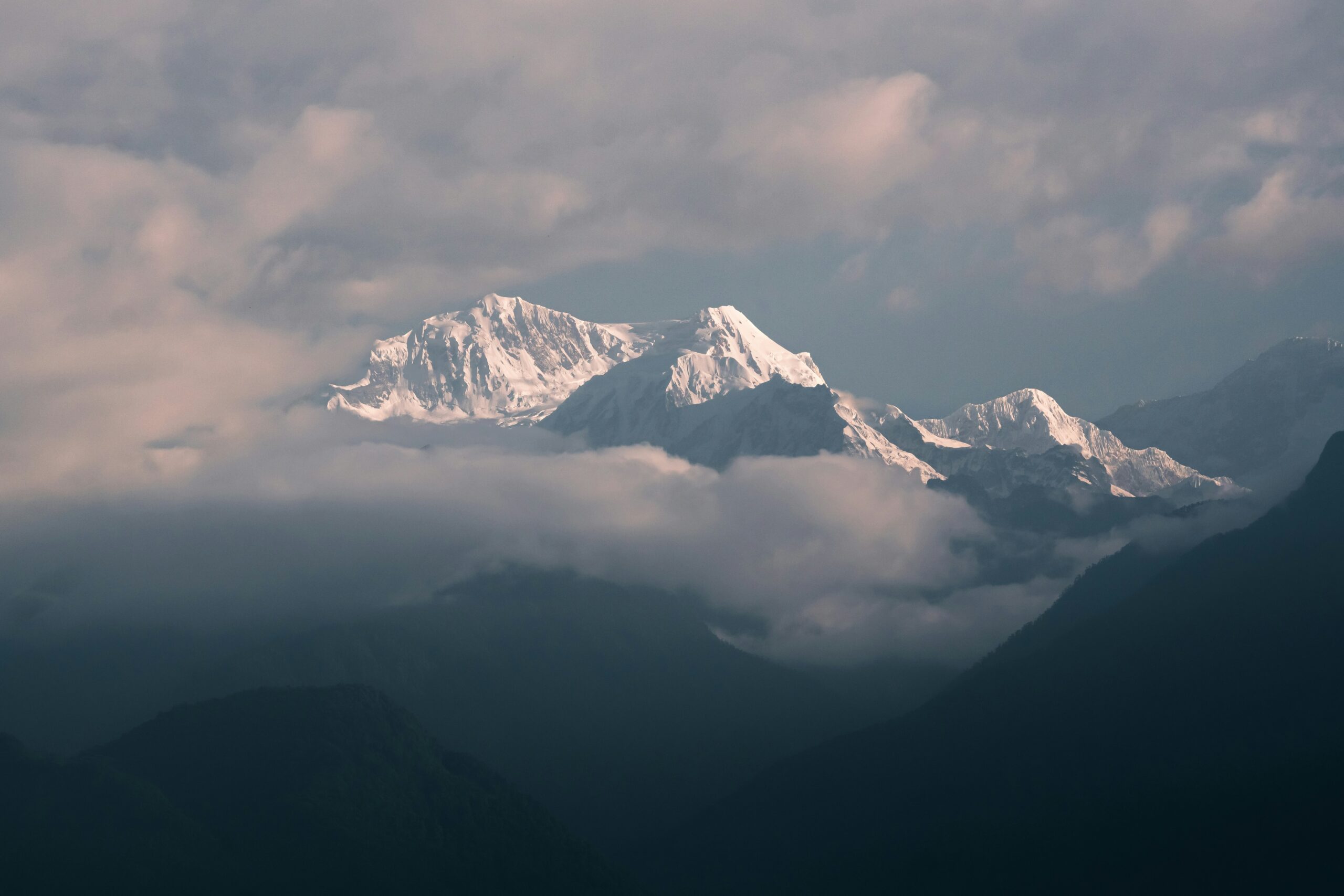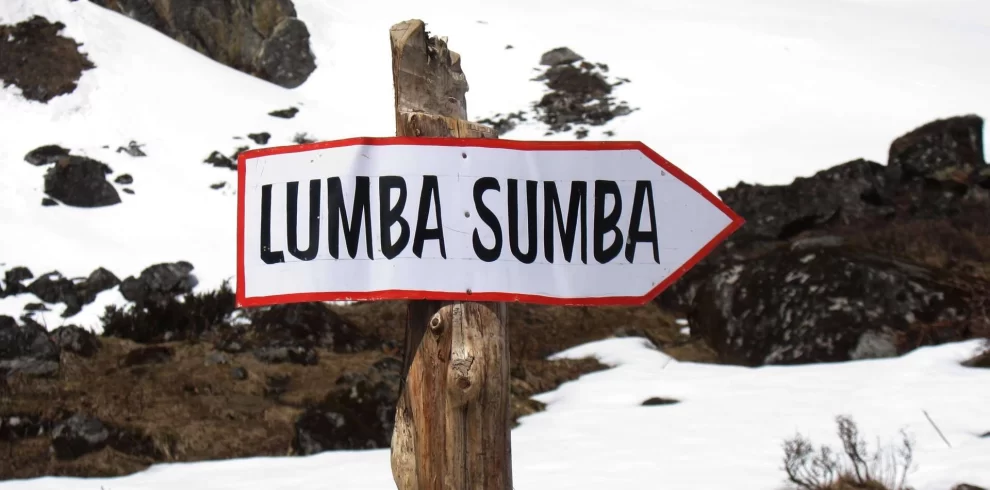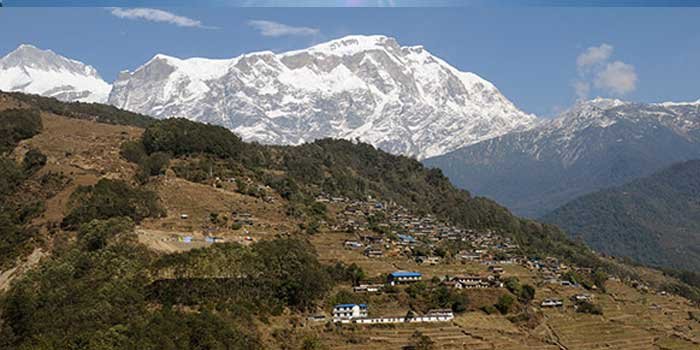Kanchenjunga Circuit Trek: Kanchenjunga, the third highest mountain in the world, is nestled between the Tamur River to the west, the Lhonak Chu and Jongsang La to the north, and the Teesta River to the east. This majestic peak is often considered a divine realm, surrounded by enigmatic woodlands and towering Himalayan peaks. It remains one of Nepal’s most secluded regions, a place shrouded in mystery and legends.
Known as the “Five Treasures of Snow,” Kanchenjunga is a land steeped in myth and visited only by a few. Join Female Guide Holiday Pvt. Ltd. on this mystical trek, exploring a realm known to monks and deities alike.
Overview:
The Kanchenjunga Circuit Trek offers a journey through charming hillside villages, dense rainforests, and rugged alpine terrain, all while following river networks, glaciers, and moraines. The trek culminates at the base of the world’s third highest peak, where the journey itself becomes as memorable as the stunning views.
The adventure begins with a scenic flight to Bhadrapur, followed by a drive to Suketar, the starting point of your trek. From Suketar, you’ll traverse lush sub-tropical forests to reach the village of Lali Kharka, a picturesque pastureland. Continuing through ancient woodlands, you’ll arrive at Kande Bhanjyang Village, then move toward Phumphe Danda Village. Here, you’ll marvel at the natural beauty before heading to the settlement of Yamphudin.
Following the Amji Khola rapids, you’ll cross the Lassiya Bhanjyang Pass and reach the small village of Tortong. From there, you’ll journey through Lalung Valley to Cheram, and then on to Ramche, where you’ll enjoy breathtaking views of the Koktang, Rathong, and Kabru peaks, as well as alpine lakes and crystal-clear rivers.
Your trek continues over moraines and rocky terrain to the South Base Camp. From here, you’ll be rewarded with magnificent views of Yalung Glacier and several stunning lakes. The vistas include Rathong at 6682 meters, the Kabru range at 7412 meters, the south face of Kanchenjunga at 8598 meters, and Jannu at 7710 meters. After exploring the base camp, you’ll return to Cheram.
Panoramic views of Mt. Kanchenjunga
The next day will take you across several passes to Selele Kharka, a high alpine grassland. The trail then winds through ancient forests with spectacular landscape views, leading to the final village in the valley, Ghunsa. From Ghunsa, you’ll traverse slopes and glacier moraines to the Tibetan village of Kambachen. Following the northern side of the Kanchenjunga Glacier and crossing uneven trails, you’ll reach the village of Lhonak, with its stunning views of Wedge Peak, Mera Peak, Nepal Peak, and Twins Peak. You’ll then proceed to the Kanchenjunga North Base Camp, where you’ll be treated to panoramic views of Mt. Kanchenjunga, Janu Himal, Everest, Makalu, Tharpu Chuli, Kabru, and numerous other mountain ranges.
From the North Base Camp, you’ll head back to Ghunsa, then to Amjilosa, and on to the small village of Chirwa before arriving in Taplejung. A long drive will then take you back to Bhadrapur, where you’ll catch a flight to Kathmandu.
The Kanchenjunga North Base Camp Trek offers an unforgettable adventure, showcasing a region of unmatched beauty and the warmth of its people. Experience this extraordinary journey with Female Guide Holiday Pvt. Ltd., and let it capture your imagination.
Entry Fee and Permits
To trek in the Kanchenjunga region, the following permits are required:
Kanchenjunga Trek Permit Costs:
Kanchenjunga Conservation Area Project (KCAP) Entry Permit: NPR 2,000 per person, with no time restrictions on the permit.
Restricted Area Permit (RAP): USD 10 per person, per week.
Kanchenjunga Trek RAP Requirements:
This permit must be issued by a registered local travel agency in Nepal, and a minimum of two trekkers is required to obtain it.
You will need the following documents:
- A valid passport with at least six months’ validity and a Nepal visa valid beyond the expiration of the RAP.
- Information to be provided on the agency’s letterhead:
- Application
- Itinerary
- Insurance details for the guide
- Online submission ID (provided by the agency)
- Details of the payment in dollars
- Digital copy of a passport-sized photo
Note: Female Guide Holiday Pvt. Ltd. will handle all trekking permit processes.
Accommodation:
In Kathmandu, you will stay in 3-star hotels. During the trek, accommodation will be in basic lodges or teahouses. In some remote areas, makeshift camps will be used for overnight stays.
Meals and Drinking Water
On the Kanchenjunga Trek, you’ll have the chance to enjoy a variety of Nepali and Tibetan cuisines. The trail is dotted with small teahouses operated by local residents, offering basic meals and minimal facilities.
Natural water sources are available throughout the trek from taps and streams. However, as these water supplies are untreated, it’s not recommended to drink directly from them. You can refill bottles with boiled or filtered water from the teahouses along the trail.
For additional safety and convenience, consider carrying water purification tablets, chlorine drops, or using SODIS (solar water disinfection). This not only ensures safe drinking water but also helps reduce plastic waste along the route.
Best Time to Visit
The ideal seasons for trekking in the Kanchenjunga region are autumn and spring.
Autumn (September, October, November): This is one of the best times for trekking. The skies are clear, offering breathtaking views of the surrounding mountain ranges. The forests are lush, and the temperatures are warm during the day with cooler nights—perfect for stargazing.
Spring (March, April, May): As winter ends, the region comes alive with colorful blooms in the sub-alpine forests and green pastures. The weather is mild, and clear skies offer excellent visibility. You’ll also witness herds of sheep and yaks grazing in the highlands during this season.
Monsoon (June, July, August): This season is generally avoided by trekkers due to heavy rain, landslides, and challenging travel conditions.
Winter (December, January, February): The Kanchenjunga region experiences heavy snowfall in winter, making trekking difficult and sometimes impossible as many trails become blocked.
Female Guide Holiday Pvt. Ltd. recommends visiting during spring or autumn for the best trekking experience.
Travel Insurance
It is mandatory for all clients participating in our treks to have comprehensive travel insurance. This should cover personal injury, medical expenses, emergency evacuation (including helicopter rescue), and repatriation in case of accidents, illness, or other unforeseen circumstances. We strongly recommend purchasing insurance from a reputable provider to ensure you are fully protected during your trek in Nepal.
Passport and Visa
To enter Nepal, all travelers must have a valid passport with at least six months remaining from the date of return. Visas can be obtained through the Nepalese consulate in your home country or upon arrival at Tribhuvan International Airport in Kathmandu.
Important Note:
Your safety is of paramount importance to us at the Female Guide Holiday. We have the absolute authority to cancel the trip or change the itinerary, when deemed necessary or when we have reason to believe your safety is at stake. Weather conditions, the health condition of a group member, natural disasters, and such, can contribute to changes in the itinerary when traveling in remote mountainous regions. In these extreme situations, we kindly request that you offer your full cooperation to the trusted leader of the group appointed by the Female Guide Holiday. However, we assure you that we will make every effort to keep to the above itinerary.
Why Choose Female Guide Holiday ?
Choosing Female Guide Holiday for the Kanchenjunga Circuit Trek ensures a unique and enriching experience with several standout benefits. Specializing in female-led adventures, the company offers expertly guided treks led by experienced female guides, creating a supportive and empowering environment. Their comprehensive support includes not only skilled guides and porters but also personalized service that tailors the trek to your specific needs. Female Guide Holiday’s deep cultural insight enhances your journey through authentic interactions with local communities, while their commitment to safety, comfort, and sustainable practices ensures a responsible and enjoyable trek. Opting for Female Guide Holiday means entrusting your adventure to a team dedicated to providing a memorable and impactful experience.




